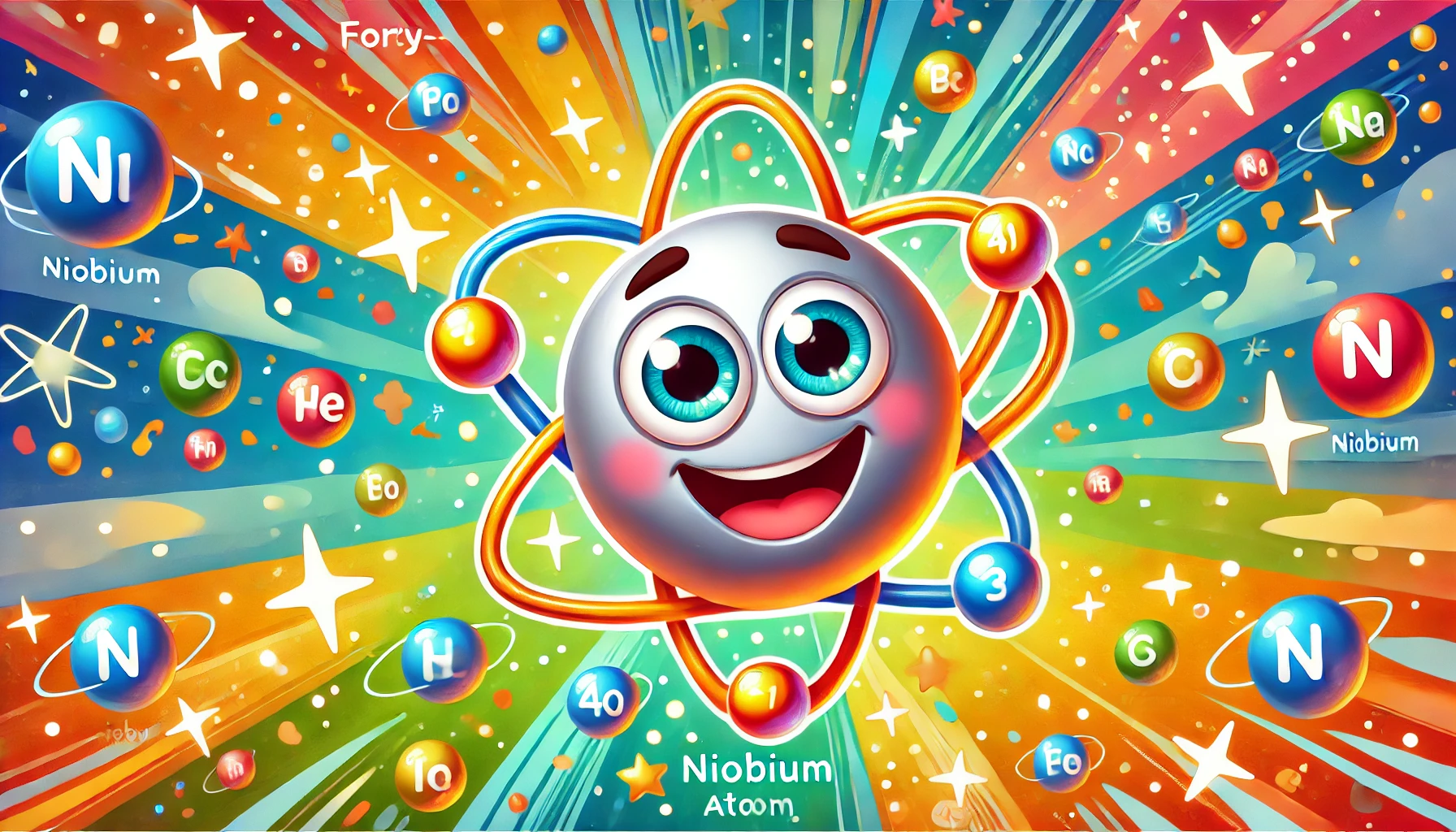Understanding Niobium: Properties, Uses, Health Risks, and Fascinating Facts
Understanding Niobium: Properties, Uses, Health Risks, and Fascinating Facts
Table of Contents
- Introduction to Niobium
- Properties of Niobium
- Uses of Niobium
- Health Risks of Niobium Exposure
- Interesting Facts about Niobium
- Environmental Impact of Niobium
- Conclusion
- References
Understanding Niobium: Properties, Uses, Health Risks, and Fascinating Facts
Introduction to Niobium Niobium is a chemical element with the symbol Nb and atomic number 41. It is a transition metal known for its high melting point, excellent corrosion resistance, and numerous industrial applications. This article explores the properties, uses, health risks, and interesting facts associated with niobium, providing a comprehensive understanding of this valuable element.
Properties of Niobium Niobium is characterized by several distinct physical and chemical properties.
Physical Properties
- Appearance: Niobium is a shiny, gray, ductile metal.
- Density: The density of niobium is 8.57 g/cm³.
- Melting Point: Niobium has a high melting point of 2,468°C (4,474°F).
- Boiling Point: The boiling point of niobium is 4,927°C (8,901°F).
Chemical Properties
- Reactivity: Niobium is highly resistant to corrosion due to the formation of a stable oxide layer on its surface. It is inert to most acids and alkalis but reacts with hydrofluoric acid.
- Compounds: Niobium forms various compounds, such as niobium pentoxide (Nb₂O₅), niobium chloride (NbCl₅), and niobium carbide (NbC).
Uses of Niobium Niobium has numerous applications across different industries due to its unique properties.
Metallurgy
- Steel Alloys: Niobium is used in the production of high-strength, low-alloy steels for construction, automotive, and pipeline industries due to its ability to enhance strength and toughness.
- Superalloys: Niobium is used in superalloys for jet engines, gas turbines, and other high-temperature applications due to its high melting point and corrosion resistance.
Electronics and Superconductors
- Superconducting Magnets: Niobium-titanium (NbTi) and niobium-tin (Nb₃Sn) alloys are used in superconducting magnets for MRI machines, particle accelerators, and other scientific equipment.
- Capacitors: Niobium oxide is used in capacitors for electronic devices, offering high capacitance and reliability.
Medical Applications
- Implants: Niobium’s biocompatibility makes it suitable for medical implants, such as pacemakers and prosthetics, as it does not react with body tissues.
Chemical Processing
- Corrosion-Resistant Equipment: Niobium is used in the manufacturing of chemical processing equipment, such as pumps, valves, and heat exchangers, due to its resistance to corrosive environments.
Health Risks of Niobium Exposure Niobium is generally considered to have low toxicity, but there are some health risks associated with exposure to niobium compounds and dust.
Inhalation and Ingestion
- Respiratory Irritation: Inhalation of niobium dust can cause respiratory irritation, coughing, and shortness of breath.
- Gastrointestinal Issues: Ingestion of niobium compounds can cause gastrointestinal irritation, including nausea and vomiting.
Skin and Eye Contact
- Skin Irritation: Direct contact with niobium compounds can cause skin irritation and dermatitis.
- Eye Irritation: Exposure to niobium dust or solutions can cause eye irritation and potential damage.
Chronic Exposure
- Lung Effects: Prolonged exposure to niobium dust may lead to lung damage and other respiratory issues.
Interesting Facts about Niobium Niobium has several intriguing aspects that make it an interesting element.
Discovery
- Discovered in 1801: Niobium was discovered by English chemist Charles Hatchett in 1801. It was originally named columbium, but the name was later changed to niobium in honor of Niobe, the daughter of Tantalus in Greek mythology.
Unique Properties
- Superconductivity: Niobium is one of the few elements that exhibit superconductivity at relatively high temperatures, making it valuable in advanced scientific applications.
- Corrosion Resistance: Niobium’s excellent corrosion resistance makes it ideal for use in harsh chemical environments.
Isotopes
- Stable Isotopes: Niobium has one naturally occurring stable isotope, niobium-93.
- Radioactive Isotopes: Niobium-94 and niobium-95 are among its radioactive isotopes, used in scientific research and industrial applications.
Environmental Impact of Niobium Niobium is not known to have significant environmental impacts, but its extraction and use should still be managed responsibly.
Natural Occurrence
- Abundance: Niobium is relatively abundant in the Earth’s crust and is typically found in minerals such as pyrochlore and columbite.
- Mining: Extraction of niobium from these minerals must be done with care to avoid environmental damage.
Industrial Waste
- Waste Management: Proper disposal of niobium-containing industrial waste is crucial to prevent environmental contamination.
Conclusion Understanding niobium, its properties, uses, health risks, and interesting facts provides valuable insight into this versatile element. While niobium is generally safe with low toxicity, appropriate safety measures should be taken when handling niobium compounds and dust. Its applications in metallurgy, electronics, medical implants, and chemical processing highlight its importance in modern technology and industry.

<ⓒ WizardMedics (wizardmedics.com)>


